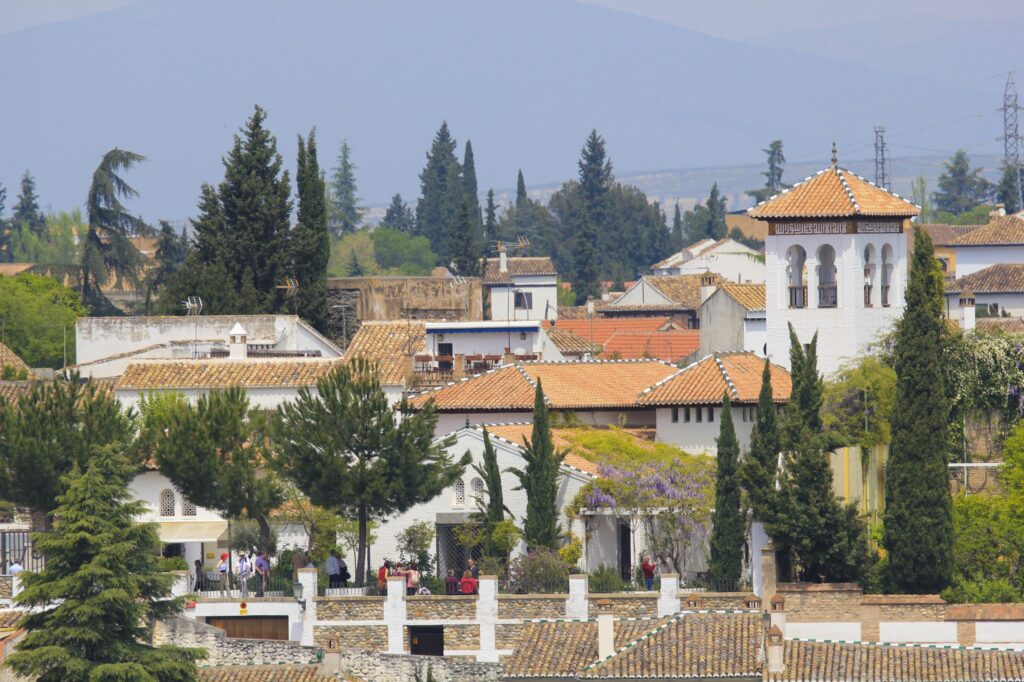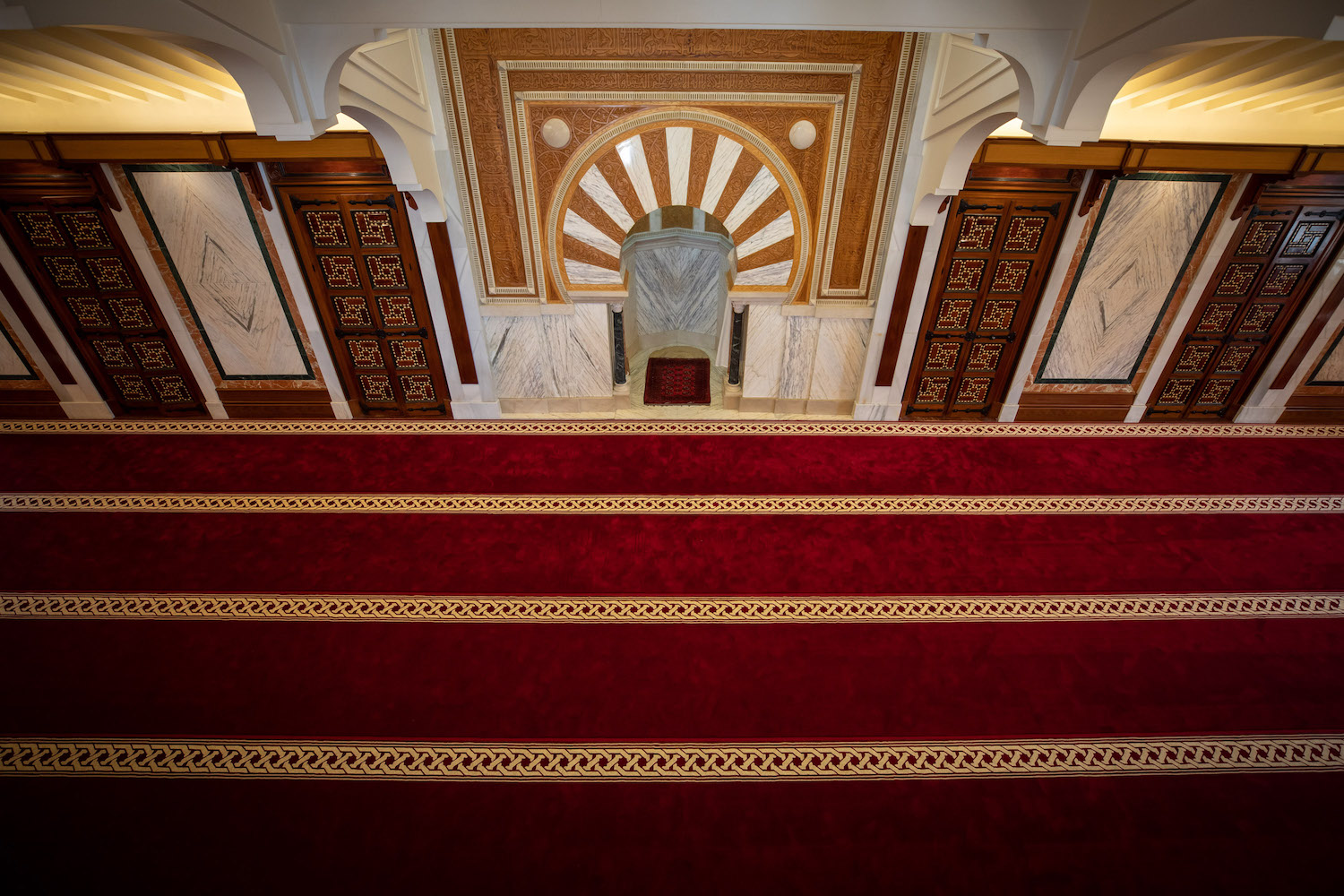Ser justo en los tratos
Alhamdulillahi Rabbil alamin. Doy testimonio de que no hay más dios que Allah, Único, sin [...]
Read MoreLa apertura de la Mezquita Mayor de Granada en el verano del año 2003 marcó un hito histórico, al igual que su silueta en el horizonte del Albaicín y frente a la majestuosa estampa de la Alhambra y Sierra Nevada representa un hito en el paisaje de Granada.
La Mezquita Mayor de Granada representa la restauración de un vínculo perdido y señala la continuidad, después de un paréntesis de 500 años, de una tradición fecunda y enriquecedora en todas las esferas del quehacer humano.
La Mezquita Mayor de Granada es también un signo de la vitalidad del mensaje profético del Islam y su relevancia en Europa y en Occidente. Las contribuciones al saber, el pensamiento y la cultura del mundo islámico a través de España fueron muy importantes en el pasado y los musulmanes europeos de hoy aspiramos a contribuir a la transformación del mundo en que vivimos donde tantas injusticias y dilemas acuciantes nos afectan a todos.
El Islam es el último mensaje revelado, que ofrece las alternativas viables y naturales al capitalismo voraz y a la rápida disolución de todos los valores en la actual sociedad de consumo.
La palabra mezquita procede de la palabra árabe ‘masyid‘ que significa: el lugar de postración. La postración es la forma más evidente de sometimiento al Creador del Universo. El musulmán se postra cinco veces al día: al amanecer, a mediodía, a media tarde, al ponerse el sol y cuando la oscuridad de la noche cubre el cielo. La tierra entera, cualquier sitio que no sea impuro o sucio es un lugar de adoración y postración. No obstante, desde los primeros días del Islam, la comunidad musulmana ha creado espacios reservados, limpios y protegidos en el centro de las ciudades para establecer en ellos la oración en congregación. Eso son las mezquitas.
La mezquita es el corazón de la comunidad musulmana. No sólo sirve como lugar de oración. Es también un lugar de conocimiento y estudio. Algunas mezquitas fueron escuelas y universidades. Las primeras mezquitas eran también municipio y parlamento: lugares de reunión y encuentro para decidir y solucionar asuntos de la comunidad.
Las grandes mezquitas tienen habitualmente anexas o en su proximidad otras instituciones de carácter gratuito y benéfico como hospitales, albergues para viajeros, comedores para los pobres, hospicios para los huérfanos, escuelas, baños públicos y a menudo un mercado de libre acceso y sin plazas reservadas.
Estas instituciones de beneficencia y un mercado libre con moneda real de oro y plata en torno a la mezquita forman la célula primaria de una sociedad compasiva y generosa.
La Mezquita Mayor de Granada está compuesta por tres elementos bien diferenciados. El Jardín, la sala de oración que es la Mezquita, propiamente dicha, y el Centro de Estudios Islámicos.
El Jardín se asoma al valle del río Darro y al monte de Sabika en cuya cima se erige la Alhambra. Al fondo se divisan las cumbres de Sierra Nevada. Las variedades botánicas de este jardín son todas mediterráneas, pino, olivo, granado, naranjo y limonero y las dos fuentes de mosaico netamente andaluzas.
La Mezquita se ha decorado con sobrios elementos tomados de las tradiciones del mundo islámico. El mihrab que marca la dirección de la oración hacia Mekkah es una réplica del de la Mezquita de Córdoba. Los paneles de madera de cedro del Atlas tallados a mano contienen una aleya del Corán donde se nombran algunos de los atributos divinos.
Los paños de mármol de diferentes colores son idénticos a los de la Mezquita Al Aqsa de Jerusalem. Las grandes ventanas de la qibla son copia de las de la Mezquita Azul en Estambul. La fuente y los mosaicos del patio que da acceso a la sala de oración han sido realizados por artesanos de Fez que han preservado los mismos diseños y las mismas técnicas utilizadas en la Granada musulmana de hace mil años.
El alminar es una torre de proporciones y silueta genuinamente albaicineras. La inscripción en mosaico con caligrafía kúfica que se puede leer bajo su alero es la declaración de fé: ‘No hay mas dios que Allah. Muhammad es el Mensajero de Allah’.
Por último, el Centro de Estudios Islámicos contiene una biblioteca con textos sobre el Islam en árabe, español y otros idiomas, así como medios audiovisuales. También incluye una sala de conferencias con capacidad para 140 personas y una sala de exposiciones. En la planta baja y en el zagüán principal de entrada se encuentra la recepción y la tienda de libros, artesanía y recuerdos de la mezquita.

En la Mezquita Mayor de Granada se celebran las cinco oraciones diarias en congregación a sus tiempos establecidos, todos los días del año y la oración comunitaria de los Viernes a mediodía, elsalat al Yumu’ah. En la mezquita hay un plan diario durante todo el año de recitación y estudio del Corán y de la jurisprudencia islámica para niños y adultos musulmanes.
El Centro de Estudios Islámicos de la Mezquita tiene un programa continuo de conferencias, clases de lengua árabe, exposiciones, y cursos de temas relacionados con el Islam y el legado islámico de España y está abierto a la participación y asistencia de todo el público interesado.
Existe también un punto de asistencia al necesitado, al viajero y a los musulmanes en general, con una línea abierta y un equipo de voluntarios que colaboran con instituciones y Organizaciones No Gubernamentales.
El Centro tiene una Biblioteca con textos y materiales audiovisuales sobre el Islam en árabe, inglés y español.
Para visitas guiadas de grupo o para información sobre cursos, clases, exposiciones y otras actividades educativas, por favor contacten con nosotros llamando al 958 202 526 o a través del correo electrónico.
